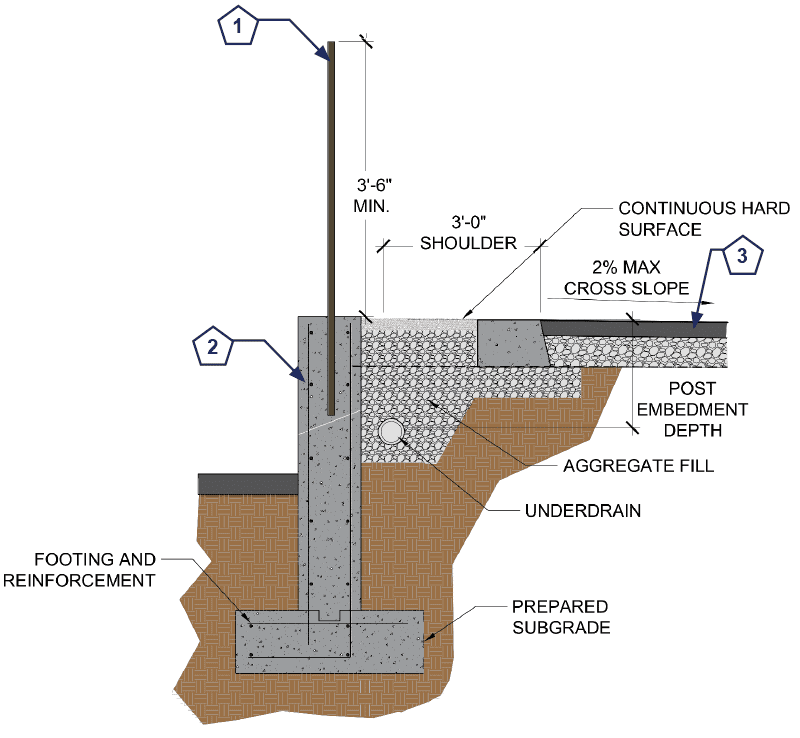Walls are used both as free standing and as retaining conditions throughout the trail system.
Concrete walls provide a wider range of options from surface treatments like the use of pattern form-liners or the application of stone veneer, to greater flexibility in creating complex geometries not possible with modular walls. Concrete walls also do not require the batter that modular walls require (modular walls must slope back from the base for stability), and therefore can be beneficial in areas where space is limited. When designed correctly, concrete walls are extremely low-maintenance and long-lasting.
- While each wall or wall system will have its own specific installation requirements, in general, the cross section below should be considered the basis of design.
- Railings or guardrails should be placed directly in or on the top of the wall, depending on requirements for strength. With embedment mounted railings, pre-cast sleeves will provide the best results, limiting potential damage caused by core-drilling.
- Wall texture, color, and pattern should be considered carefully as part of the visual environment of the greenway. Where possible, selection should match or be compatible with previously constructed walls along a given greenway.
- Concrete form-liner textures should be considered as a technique to soften the face of a concrete wall, while still benefiting from the low-maintenance attributes of the concrete itself.
- Concrete walls can be built higher than modular retaining walls and are also better-suited for applications in floodplain areas.

Concrete stem walls provide variety of options and advantages over modular retaining walls in certain situations. It is important to design a proper drainage system behind the wall if it is being used as a retaining measure.
Environmental Graphics
Walls provide a valuable opportunity for the installation of visual elements that elevate brand awareness, enhance user experience and communicate interpretive messages. Great Rivers Greenway has created an environmental graphics toolkit that contains various designs and elements that can be considered during the planning and design process. Please note that it is recommended to do engraving into the stone, rather than attaching plaques, as those can be damaged or stolen.
CROSS SECTION

COMPONENTS: Click below for more information on each component.
2) Concrete Stem Wall
